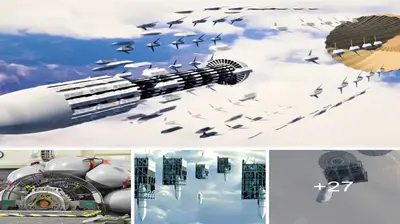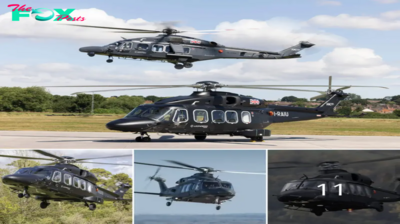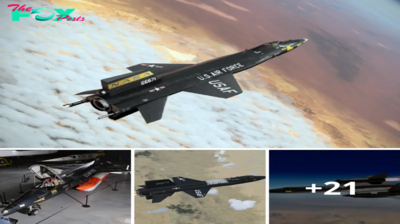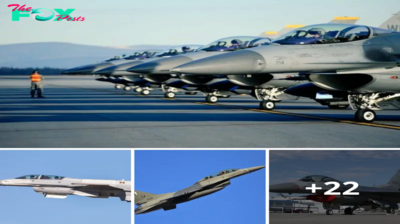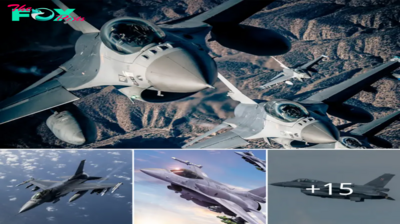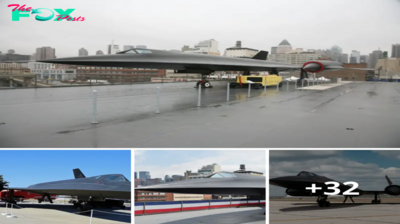Turkey will become the next country after the US, Russia, China, and South Korea to have its fifth-generation fighter jet. Turkey’s intentions for its fighter have been known for years, but for the first time, photos from the assembly line of the prototype being developed have been officially revealed.

Turkey explains that the Russians offered a better price offer, and delivery times and did not tie the deal to mandatory future arms purchases. Months of recriminations between Ankara and Washington followed, with the US pulling out its strongest trump card: if you bring the S-400 into operational capability, Turkey will be kicked out of the F-35 Lightning II program.
Turkey had ordered a hundred American F-35 fighter jets. Many Turkish enterprises from the local economy developed parts and components for the American fighter. Turkey was kicked out of the program, affecting both the local economy and Washington, because it had to quickly find manufacturers of the same Turkish components, at the same price and for the same period.
Without a fifth-generation fighter to replace Turkey’s fleet of F-16 Fighting Falcons, Ankara has given the TF-X project a fast track. Ankara also had to contend with US influence over other countries producing aircraft components, engines, and materials. But Turkey was able to get two GE F110 engines from the US because it had pre-ordered them.

At the same time, while still “drawing the plane”, Turkey decided that its dependence on the US or its other partners would increase over time. Therefore, like India, Turkey has taken steps to stimulate local production. The two engines ordered by the US will be used for the TF-X prototype. Turkey is currently developing its own engines that will power the Turkish Air Force’s fighter jet.
Photos shared online show the progress of the TF-X. The body of the plane is already assembled. It appears that the TF-X will be powered by two engines. According to sources on the ground, the plane is 20+ meters long. It is because of this characteristic that the Turkish media and observers hastened to compare the Turkish aircraft with the American F-22 Raptor. Besides the F-22, the Su-57 Felon and the Chinese J-20 Mighty Dragon are also 20+ meters long. But the Turks compare their fighter to the Raptor precisely because of the historical similarity – the F-22 also began as a project for a fifth-generation American fighter for the domestic market, and also had to replace the aging US aircraft of its time.
GE F110 engines should lift the TF-X prototype in three years. 2025 is the year in which Turkey should conduct the first main flight of the TF-X. Some experts say that surprisingly, GE F110s are extremely reliable and efficient engines. According to them, the future Turkish TF-X engine will probably follow the same characteristics. Others claim that Turkey can use GE’s F110 patents.
However, whether the GE F110 will fulfill the characteristics of the TF-X remains to be seen. This engine powers the US F-15 and F-16 fighter jets. As far as is known, Turkey will be looking for engine options similar to that of the F-22 – the Pratt and Whitney F119-100. This means a maximum flight speed in the range of Mach-2.25-2.50, as well as a maximum range of 3,000 km.

The discovery of TF-X on the assembly line is good news for Ankara. On the one hand, the Turks are showing the world that, despite the American sanctions, they are ready to accept the challenge and build their fighter. On the other hand, they will speed up the F-16 renewal processes.
The US has already agreed to upgrade Turkey’s F-16s and it makes no sense, seeing the progress of the Turks, to give up and miss the opportunity to sell upgrades over the next decade to Turkey while tests, first flights, and the first production TF-Xs are underway. And if the US is not the reason for the existence of TF-X, then the US is the reason for accelerating its existence. Washington’s economic sanctions sometimes work, but not always. Sometimes, you have to accept that you’re not the only one.


